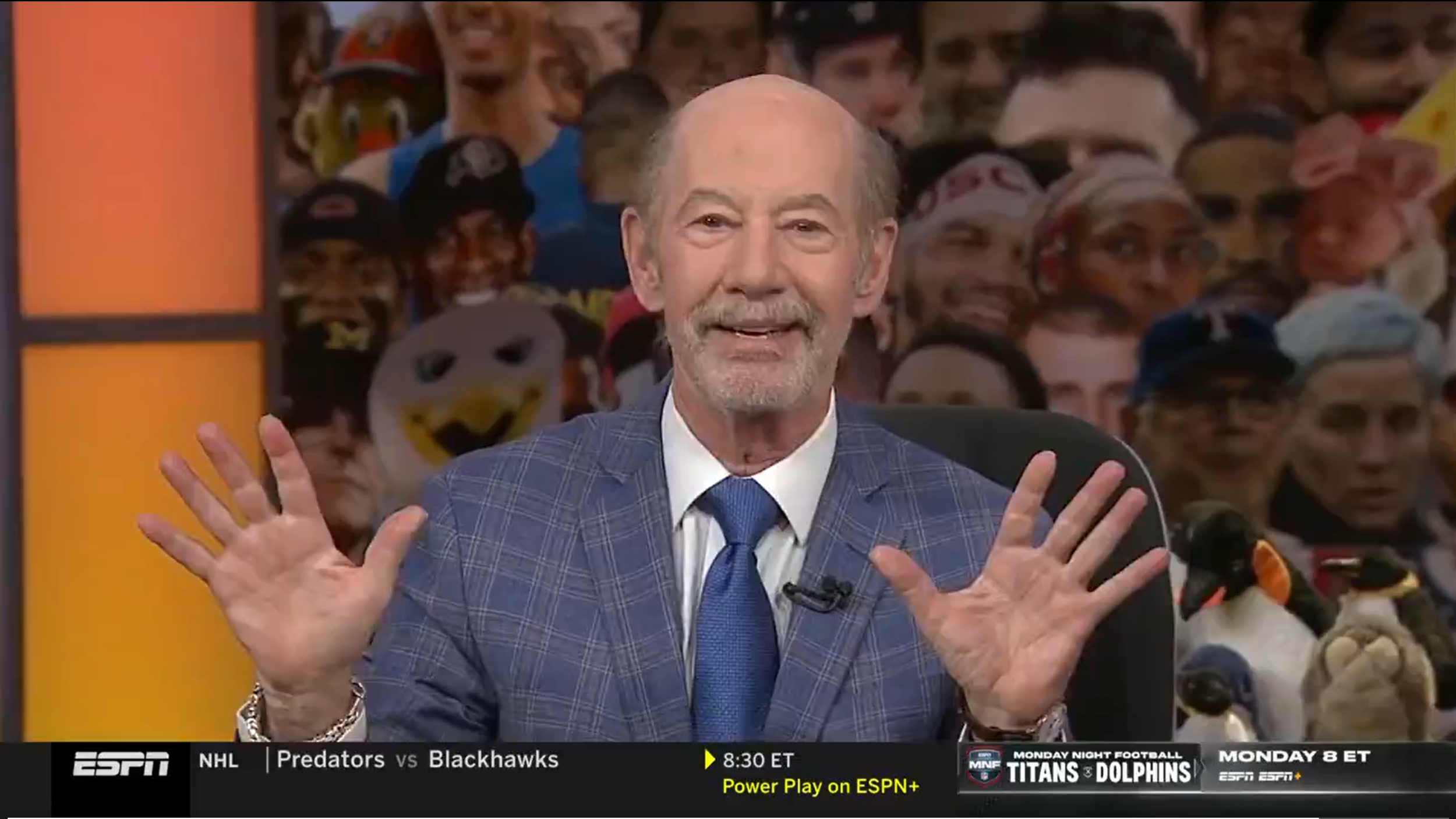The last four years have seen some drops for the College Football Playoff semifinals, which went from average audiences of 26.9 and 21.5 million in 2017 to 16.8/19.1 million in 2018, 17.2/21.6 million in 2019, 18.7/18.9 million in 2020, and 16.6/17.2 million last year. But Saturday’s thrilling games on ESPN (and various Megacast feeds on other ESPN networks and digital platforms) produced notable audience growth, per the Nielsen fast national numbers ESPN PR shared Monday morning:
🏆 The 2022 #CFBPlayoff Semifinals delivered 21.7 million viewers, becoming the most-viewed non-New Year's Day Semifinals of the CFP era pic.twitter.com/4yk073nY1a
— ESPN PR (@ESPNPR) January 2, 2023
The @Fiesta_Bowl registered 21.4 million viewers and peaked with 26.4 million viewers 👀
🏈 3rd most-watched afternoon semi of CFP era
🏈 6th best #CFBPlayoff Semifinal game of CFP era pic.twitter.com/X2NS0n9epE— ESPN PR (@ESPNPR) January 2, 2023
A huge part of the discussion around playoff numbers has been where the games wind up on the calendar. This year’s games were played on New Year’s Eve, which has often been bad news for the ratings, especially when that falls on a weeknight. (And that’s why, after a whole lot of prompting, the CFP moved semifinals off of weekday New Year’s Eves.) A Saturday New Year’s Eve seems a little better, especially for the early game (the Fiesta Bowl, seen above), and it’s probably better overall than it used to be given advances in out-of-home viewership tracking (still often far from perfect, though!).
But there’s still seemingly a negative for New Year’s Eve versus New Year’s Day. That’s why this is noted as the “most-viewed non-New Year’s Day semifinals.” And while the 12/31/16 semifinals (the only ones previously played on a Saturday New Year’s Eve) saw a rise from the previous year’s weekday New Year’s Eve, they weren’t great overall, and were thumped by the 1/1/18 semifinals (which drew the best numbers since the first playoff semifinals, on 1/1/2015).
Of course, playing on New Year’s Day this year would have run head-on into a NFL Sunday. That’s something the CFP very much wants to avoid, as is going head-to-head with the NFL in general. (They may not be able to avoid it completely given CFP expansion and the NFL’s own weekday/Saturday/holiday expansion, though.) So the Saturday New Year’s Eve dates were probably the best they could do. And in this case, that scheduling seemed to work out pretty well.
Of course, there are factors in the ratings beyond the date. Perhaps most significantly, there’s how close the games were (always a huge boost, as new people tune in for the finish and less existing viewers check out early). The fanbases and TV markets involved also looked solid. So we can’t isolate anything here to just when the game was played.
But it is notable to see this kind of positive momentum for the playoff semifinals after four straight years below 20 million viewers. And it’s notable to see that happen for games played on New Year’s Eve. We’ll see where the ratings go for this year’s CFP National Championship, which will be played on Monday, Jan. 9, and which will be starting earlier than normal.
[ESPN PR on Twitter; photo from Joe Rondone/The Arizona Republic, via USA Today Sports]







